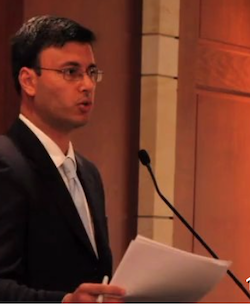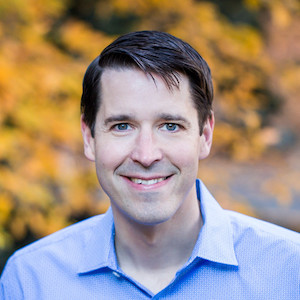Feature Articles
A Framework For Building Products From Open Source Projects
 If your experience with technology resembles mine in any way, you know intuitively that the projects we DIY are not the same as the products we spend money buying. This isn't a new observation in the open source community...Sarah Novotny, who led the Kubernetes community and was heavily involved in the Nginx and MySQL communities, emphatically articulated at the inaugural Open Core Summit that the open source project a company shepherds and the product that a company sells are two completely different things. Yet, project and product continue to be conflated by maintainers-turned-founders of commercial open source software (COSS) companies, especially (and ironically) when the open source project gets traction. This mistake gets repeated, I believe, because it's hard to mentally conceptualize how and why a commercial product should be different when the open source project is already being used widely.
If your experience with technology resembles mine in any way, you know intuitively that the projects we DIY are not the same as the products we spend money buying. This isn't a new observation in the open source community...Sarah Novotny, who led the Kubernetes community and was heavily involved in the Nginx and MySQL communities, emphatically articulated at the inaugural Open Core Summit that the open source project a company shepherds and the product that a company sells are two completely different things. Yet, project and product continue to be conflated by maintainers-turned-founders of commercial open source software (COSS) companies, especially (and ironically) when the open source project gets traction. This mistake gets repeated, I believe, because it's hard to mentally conceptualize how and why a commercial product should be different when the open source project is already being used widely.
The Goldilocks Problem of Mobile Security - Usability vs. Security
 The “Goldilocks and the Three Bears” story begins with a girl tasting porridge. The first bowl is too hot, the second is too cold, and the third is “just right.” This article considers mobile device security for government and organizations. The theme is trade-offs between the usability of a mobile device and security for confidential organizational data such as conversations, messages, documents, images, and locations. The security, confidentiality, and integrity of communication are key. However, if the usability of mobile devices for end-users, administrators, and organizations is too challenging, then the availability of the data for productive work is lost.
The “Goldilocks and the Three Bears” story begins with a girl tasting porridge. The first bowl is too hot, the second is too cold, and the third is “just right.” This article considers mobile device security for government and organizations. The theme is trade-offs between the usability of a mobile device and security for confidential organizational data such as conversations, messages, documents, images, and locations. The security, confidentiality, and integrity of communication are key. However, if the usability of mobile devices for end-users, administrators, and organizations is too challenging, then the availability of the data for productive work is lost.
New Report: Top Challenges Facing HHS Includes Harnessing Data
 In November 2019 the US Department of Health and Human Services (HHS) Office of Inspector General (OIG) released a new report, Top Management and Performance Challenges Facing HHS. Divided into six major sections, this report reviews the OIG's observations with respect to financial integrity of HHS programs, value and quality, protecting the health and safety of beneficiaries as well as the public at large, harnessing data to achieve these goals, and working across government. The fifth challenge, "Harnessing Data To Improve Health and Well-Being of Individuals," is particularly foundational. Read More »
In November 2019 the US Department of Health and Human Services (HHS) Office of Inspector General (OIG) released a new report, Top Management and Performance Challenges Facing HHS. Divided into six major sections, this report reviews the OIG's observations with respect to financial integrity of HHS programs, value and quality, protecting the health and safety of beneficiaries as well as the public at large, harnessing data to achieve these goals, and working across government. The fifth challenge, "Harnessing Data To Improve Health and Well-Being of Individuals," is particularly foundational. Read More »
Towards a New EHR Metaphor - Or, How to Fix Unusable EHRs
 News flash: docs hate Excel! In a recent study, which included researchers from Yale, the Mayo Clinic, Stanford, and the AMA, physicians rated it only at 57% on a usability rating, far below Google search (93%), Amazon (82%), or even Word (76%). But, of course, Excel wasn't their real problem; the study was aimed at electronic health records (EHRs), which physicians rated even lower: 45%, which the study authors graded an "F." If we want EHRs get better, though, we may need to start with a new metaphor for them.Lead author Edward Melnick, MD, explained the usability issue: "A Google search is easy. There's not a lot of learning or memorization; it's not very error-prone. Excel, on the other hand, is a super-powerful platform, but you really have to study how to use it. EHRs mimic that."
News flash: docs hate Excel! In a recent study, which included researchers from Yale, the Mayo Clinic, Stanford, and the AMA, physicians rated it only at 57% on a usability rating, far below Google search (93%), Amazon (82%), or even Word (76%). But, of course, Excel wasn't their real problem; the study was aimed at electronic health records (EHRs), which physicians rated even lower: 45%, which the study authors graded an "F." If we want EHRs get better, though, we may need to start with a new metaphor for them.Lead author Edward Melnick, MD, explained the usability issue: "A Google search is easy. There's not a lot of learning or memorization; it's not very error-prone. Excel, on the other hand, is a super-powerful platform, but you really have to study how to use it. EHRs mimic that."
3 Global Health IT Takeaways You Need to Know - Reflections from ONC 3rd Interoperability Forum
 The Office of the National Coordinator for Health IT (ONC) engages in several global health IT projects from a United States government perspective. ONC works with global counterparts to share experiences, and ensure alignment between global interoperability efforts and the United States' approaches to interoperability. This includes working through worldwide partnerships, bi-lateral and multi-lateral engagements, global networks, and memoranda of understanding. Through these engagements, we focus on advancing common health data standards for global interoperability, enhancing individuals' access to their data, progressing healthcare providers' experiences, and improving factors associated with transparency and competition.
The Office of the National Coordinator for Health IT (ONC) engages in several global health IT projects from a United States government perspective. ONC works with global counterparts to share experiences, and ensure alignment between global interoperability efforts and the United States' approaches to interoperability. This includes working through worldwide partnerships, bi-lateral and multi-lateral engagements, global networks, and memoranda of understanding. Through these engagements, we focus on advancing common health data standards for global interoperability, enhancing individuals' access to their data, progressing healthcare providers' experiences, and improving factors associated with transparency and competition.
6 remarkable features of the new United Nations open source initiative
 The United Nations wants to make technology, software, and intellectual property available to everyone, including developing countries. Open source and free software are great tools to achieve this goal since open source is all about empowering people and global collaboration while protecting the personal data and privacy of users. So, the United Nations and the open source community share the same values. This new open source strategy and policy is developed by the United Nations Technology Innovation Labs (UNTIL). Last month, we had our first in-person meeting in Helsinki in the UNTIL offices. I find this initiative remarkable for several reasons:
The United Nations wants to make technology, software, and intellectual property available to everyone, including developing countries. Open source and free software are great tools to achieve this goal since open source is all about empowering people and global collaboration while protecting the personal data and privacy of users. So, the United Nations and the open source community share the same values. This new open source strategy and policy is developed by the United Nations Technology Innovation Labs (UNTIL). Last month, we had our first in-person meeting in Helsinki in the UNTIL offices. I find this initiative remarkable for several reasons:
Product Vs. Project In Open Source
 The main reason that open source is good for security is that you can see what's going on when there's a problem, and you have a chance to fix it. Or, more realistically, unless you're a security professional with particular expertise in the open source project in which the problem arises, somebody else has a chance to fix it. We hope that there are sufficient security folks with the required expertise to fix security problems and vulnerabilities in software projects about which we care.It's a little more complex than that, however. As an organisation, there are two main ways to consume open source:
The main reason that open source is good for security is that you can see what's going on when there's a problem, and you have a chance to fix it. Or, more realistically, unless you're a security professional with particular expertise in the open source project in which the problem arises, somebody else has a chance to fix it. We hope that there are sufficient security folks with the required expertise to fix security problems and vulnerabilities in software projects about which we care.It's a little more complex than that, however. As an organisation, there are two main ways to consume open source:
What Western States Can Learn From Native American Wildfire Management Strategies
 News media coverage of wildfires commonly frames them as "natural disasters" - dangerous elements of the natural world over which humans have little control. The language of climate change, fear of fire and the sense that it has become inevitable can be overwhelming, leaving people with the view that little can be done to manage these events. But in fact, people aren't helpless. While fires can be dangerous, they are inevitable and necessary in many ecosystems, and humans have long adapted to them. Across North America, indigenous peoples have actively managed forest ecosystems through the use of fire. Euro-American settlers were struck by the rich biodiversity of California's forests, woodlands and prairies, but they didn't understand that indigenous people's use of fire was responsible for them.
News media coverage of wildfires commonly frames them as "natural disasters" - dangerous elements of the natural world over which humans have little control. The language of climate change, fear of fire and the sense that it has become inevitable can be overwhelming, leaving people with the view that little can be done to manage these events. But in fact, people aren't helpless. While fires can be dangerous, they are inevitable and necessary in many ecosystems, and humans have long adapted to them. Across North America, indigenous peoples have actively managed forest ecosystems through the use of fire. Euro-American settlers were struck by the rich biodiversity of California's forests, woodlands and prairies, but they didn't understand that indigenous people's use of fire was responsible for them.
Instead of Medicare for All, How about VA for All?
 I wonder -- why would people be calling for a new system that would still have thousands of private hospitals/facilities and millions of healthcare professionals, practicing FFS medicine using countless systems and data structures? In short, why aren't people calling for VA for All? Like Medicare, the VA -- more especially, its healthcare component, the Veterans Health Administration -- is charged with providing healthcare to a designed population, in this case, veterans. Unlike Medicare, though, it does so as an integrated health system (by far the largest in the U.S.), with 170 VA Medical Centers, over a thousand outpatient facilities, and somewhere over 100,000 physicians...it offers some of the finest care in the world. It offers a range of services that Medicare can only dream of, and it does so at, it is believed, lower costs than private coverage or even Medicare. Plus, it also was an innovator in electronic health records and is today in telehealth. What's not to like?
I wonder -- why would people be calling for a new system that would still have thousands of private hospitals/facilities and millions of healthcare professionals, practicing FFS medicine using countless systems and data structures? In short, why aren't people calling for VA for All? Like Medicare, the VA -- more especially, its healthcare component, the Veterans Health Administration -- is charged with providing healthcare to a designed population, in this case, veterans. Unlike Medicare, though, it does so as an integrated health system (by far the largest in the U.S.), with 170 VA Medical Centers, over a thousand outpatient facilities, and somewhere over 100,000 physicians...it offers some of the finest care in the world. It offers a range of services that Medicare can only dream of, and it does so at, it is believed, lower costs than private coverage or even Medicare. Plus, it also was an innovator in electronic health records and is today in telehealth. What's not to like?
Getting Started With Pimcore: An Open Source Alternative For Product Information Management
 Product information management (PIM) software enables sellers to consolidate product data into a centralized repository that acts as a single source of truth, minimizing errors and redundancies in product data. This, in turn, makes it easier to share high-quality, clear, and accurate product information across customer touchpoints, paving the way for rich, consistent, readily accessible content that's optimized for all the channels customers use, including websites, social platforms, marketplaces, apps, IoT devices, conversational interfaces, and even print catalogs and physical stores...For years, there have been proprietary products that address some of these needs, like Salsify for data management, Adobe Experience Manager, and SAP Commerce Cloud for experience management, but now there's an open source alternative called Pimcore. Read More »
Product information management (PIM) software enables sellers to consolidate product data into a centralized repository that acts as a single source of truth, minimizing errors and redundancies in product data. This, in turn, makes it easier to share high-quality, clear, and accurate product information across customer touchpoints, paving the way for rich, consistent, readily accessible content that's optimized for all the channels customers use, including websites, social platforms, marketplaces, apps, IoT devices, conversational interfaces, and even print catalogs and physical stores...For years, there have been proprietary products that address some of these needs, like Salsify for data management, Adobe Experience Manager, and SAP Commerce Cloud for experience management, but now there's an open source alternative called Pimcore. Read More »
Transforming Health Care Through A 360-Degree View Of Data
 How medical care can be substantially improved through a full spectrum view of all factors that affect health was the topic of Payam Etminani's presentation at the 2019 IDGA Veterans Benefits Conference in Washington D.C. Etminani, the CEO of Bitscopic, argued that the ability to view all health data including social, environmental and genomic information in addition to the traditional clinical measures (vital signs, blood work, history of illness etc), would lead to significant improvement in care. Etminani described how recent advances in Big Data and Artificial Intelligence (AI) make combining and using these large and widely varied sets of information possible. Read More »
How medical care can be substantially improved through a full spectrum view of all factors that affect health was the topic of Payam Etminani's presentation at the 2019 IDGA Veterans Benefits Conference in Washington D.C. Etminani, the CEO of Bitscopic, argued that the ability to view all health data including social, environmental and genomic information in addition to the traditional clinical measures (vital signs, blood work, history of illness etc), would lead to significant improvement in care. Etminani described how recent advances in Big Data and Artificial Intelligence (AI) make combining and using these large and widely varied sets of information possible. Read More »
The Community-Led Renaissance of Open Source
 In a revival and expansion of the principles that drove the first generation of community-led open source commercial players, creators are now coming together in a new form of collaboration. Rather than withholding software under a different license, they're partnering with each other to provide the same kinds of professional assurances that companies such as Red Hat discovered were necessary back in the day, but for the thousands of discrete components that make up the modern development platform. Today's generation of entrepreneurial open source creators is leaving behind the scarcity mindset that bore open core and its brethren. Instead, they're advancing an optimistic, additive, and still practical model that adds missing commercial value on top of raw open source.
In a revival and expansion of the principles that drove the first generation of community-led open source commercial players, creators are now coming together in a new form of collaboration. Rather than withholding software under a different license, they're partnering with each other to provide the same kinds of professional assurances that companies such as Red Hat discovered were necessary back in the day, but for the thousands of discrete components that make up the modern development platform. Today's generation of entrepreneurial open source creators is leaving behind the scarcity mindset that bore open core and its brethren. Instead, they're advancing an optimistic, additive, and still practical model that adds missing commercial value on top of raw open source.
ONC Patient Matching Project Moving Forward...Slowly
 Last week, the Office of the National Coordinator for Health Information Technology (ONC) released the final report from its Patient Matching, Aggregation, and Linking (PMAL) Project, as well as an additional report describing a pilot project to test the Patient Demographic Data Quality Framework (PDDQ) to Support Patient Matching that was released several years ago. Funded from June 2015 through September 2018 by the HHS Office of the Assistant Secretary for Planning and Evaluation (ASPE) through the Patient-Centered Outcomes Research (PCOR) Trust Fund, PMAL was one of the activities I described in an earlier post. The Final Report reviews the four challenged of patient matching and linking that the PMAL project attempted to address...
Last week, the Office of the National Coordinator for Health Information Technology (ONC) released the final report from its Patient Matching, Aggregation, and Linking (PMAL) Project, as well as an additional report describing a pilot project to test the Patient Demographic Data Quality Framework (PDDQ) to Support Patient Matching that was released several years ago. Funded from June 2015 through September 2018 by the HHS Office of the Assistant Secretary for Planning and Evaluation (ASPE) through the Patient-Centered Outcomes Research (PCOR) Trust Fund, PMAL was one of the activities I described in an earlier post. The Final Report reviews the four challenged of patient matching and linking that the PMAL project attempted to address...
Why the Founder of Apache Is All-in on Blockchain
 Brian Behlendorf is perhaps best known for being a co-founder of the Apache Project, which became the Apache Software Foundation. Today, he's the executive director of the Hyperledger Foundation, an organization focused on enterprise-grade, open source, distributed ledgers (better known as blockchains). He also says he "put the first ad banner online and have been apologizing ever since." In a recent conversation on my podcast, Behlendorf talks about the goals of the Apache Project, the role of foundations generally, and his hopes for blockchain...
Brian Behlendorf is perhaps best known for being a co-founder of the Apache Project, which became the Apache Software Foundation. Today, he's the executive director of the Hyperledger Foundation, an organization focused on enterprise-grade, open source, distributed ledgers (better known as blockchains). He also says he "put the first ad banner online and have been apologizing ever since." In a recent conversation on my podcast, Behlendorf talks about the goals of the Apache Project, the role of foundations generally, and his hopes for blockchain...
How to Open Source Your Academic Work in 7 Steps
 Open source technology and academia are the perfect match. Find out how to meet tenure requirements while benefiting the whole community. Academic work fits nicely into the open source ethos: The higher the value of what you give away, the greater your academic prestige and earnings. Professors accomplish this by sharing their best ideas for free in journal articles in peer-reviewed literature. This is our currency, without a strong publishing record not only would our ability to progress in our careers degrade, but even our jobs could be lost (and the ability to get any other job). The following seven steps provide the best practices for making an academic's work open source...
Open source technology and academia are the perfect match. Find out how to meet tenure requirements while benefiting the whole community. Academic work fits nicely into the open source ethos: The higher the value of what you give away, the greater your academic prestige and earnings. Professors accomplish this by sharing their best ideas for free in journal articles in peer-reviewed literature. This is our currency, without a strong publishing record not only would our ability to progress in our careers degrade, but even our jobs could be lost (and the ability to get any other job). The following seven steps provide the best practices for making an academic's work open source...